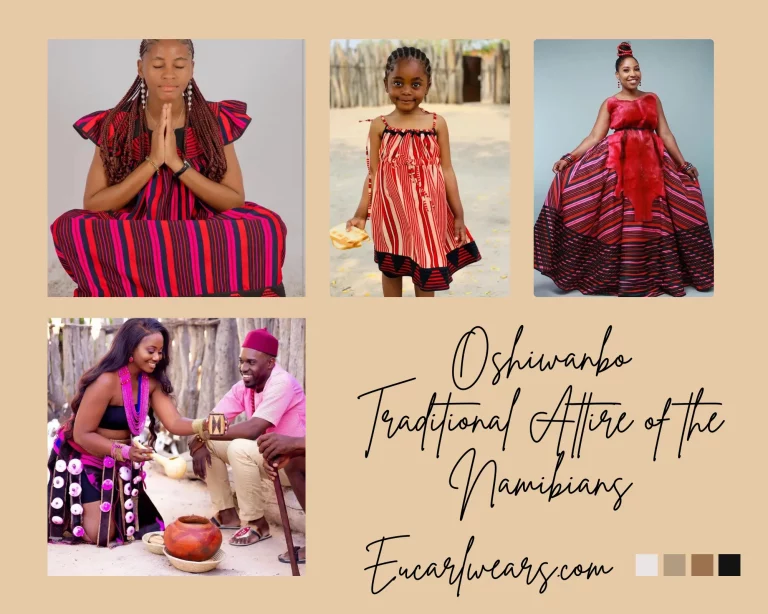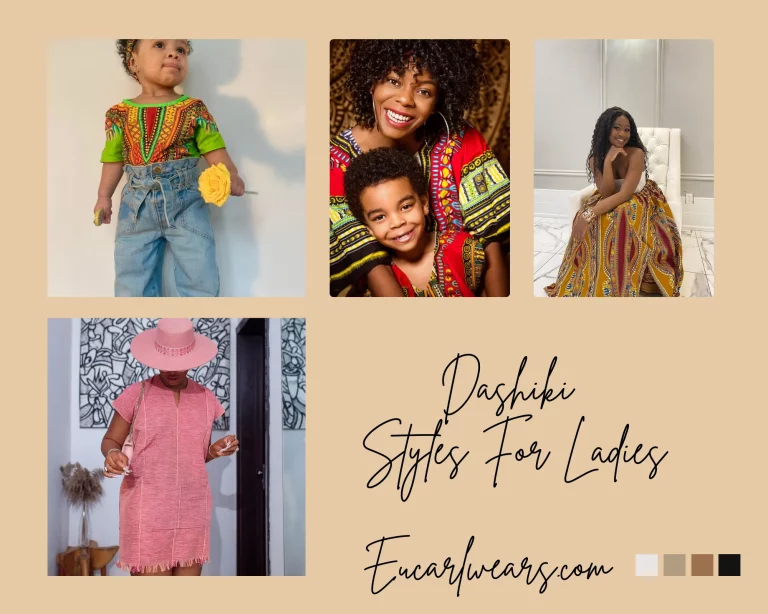Capulana Fabric: Mozambique Traditional Clothing 2024
The Capulana Fabric or the Mozambique Traditional Clothing is similar to the Kitenge of the Zambians, the Chitenge of the Namibians, the Kanga of the Kenyans and Zanzibars, the Pano of the Angolans, and other South-eastern and western African fabric forms.
The patterns differ from country to country with their varying African motifs, anthropomorphic abstracts, geometric patterns, and figurative variables in contrasting colors and forms. The markings on the Capulanas are representative of the people’s cultures, traditions, and emotions like silence, revolt, and passion.
It is spelled as capulana/kapulana in English or nguvu/vemba in Changana. The clothing is typically worn as a sarong measuring about 2 metres by 1 metre and can be wrapped around the waist, used as a dress, a baby carrier, or a towel. It is also used to carry loads from the market on the back as a backpack, as a tablecloth, and even as a curtain.
In some areas of Mozambique, south-eastern Africa, a special kind of Capulana – mucume ni vemba is worn by older women. This consists of three wrappers decorated with white lace to show that a woman is a housewife and an adult.
![Capulana Fabric: Mozambique Traditional Clothing [year] Capulanas: A Staple in Mozambican Style](https://eucarlwears.com/wp-content/uploads/2022/12/1670694528243-819x1024.webp)
The fabric is treated with special care to retain its quality as it forms part of the life of a Mozambique woman. The history of the Campala clothing are passed across by oral tradition to preserve its significance.
The foremost Capulanas consisted of three colors – red, white, and black. The white part was a representation of the people’s protection by their ancestors. Black marked evil while red was for the spirit of war. Capulanas were preferred by Mozambicans to the traditionally-used animal skins in most African countries.
To include Africa’s wildlife and environment in their traditional attires, the early designs had patterns of lions, leopards, and suns imprinted on them. Other styles such as a white and red geometric pattern – ndjiti, a plaid style which meant “shield” – xithango, wild birds spotted in black and white – ximangelani, a design with very small plaid blue and white patterns – Palu, we’re very common.
With the advent of the Colonial rule by the Portuguese, most of these styles faded and became objects of use by witch doctors – “tinyanga” and spirit healers – “curandeiros”.
Recent designs of the Capulana fabrics are in various bright designs and colors with a clash of geometric and bold patterns. Below are the images of the common Capulanas.
Pictures of the Capulana Fabrics: Mozambique Traditional Clothing
![Capulana Fabric: Mozambique Traditional Clothing [year] Capulana and Chitenge – Among Africa's Brightest Fabric Innovations](https://eucarlwears.com/wp-content/uploads/2022/12/1670694388564-1024x1024.webp)
![Capulana Fabric: Mozambique Traditional Clothing [year] Capulana, or kapulana](https://eucarlwears.com/wp-content/uploads/2022/12/1670694382397.webp)
![Capulana Fabric: Mozambique Traditional Clothing [year] Commemorative Cloth (Capulana)](https://eucarlwears.com/wp-content/uploads/2022/12/1670694437909.webp)
![Capulana Fabric: Mozambique Traditional Clothing [year] CAPULANA - UMA IDENTIDADE MOÇAMBICANA](https://eucarlwears.com/wp-content/uploads/2022/12/1670694441025.webp)
![Capulana Fabric: Mozambique Traditional Clothing [year] Putting On and Taking Off the Capulana: A Grounded Theory](https://eucarlwears.com/wp-content/uploads/2022/12/1670694460072-819x1024.webp)
![Capulana Fabric: Mozambique Traditional Clothing [year] Mozambican Capulanas: Tracing Histories and Memories](https://eucarlwears.com/wp-content/uploads/2022/12/1670694476888-819x1024.webp)
![Capulana Fabric: Mozambique Traditional Clothing [year] cotton capulana bazin pagne textile](https://eucarlwears.com/wp-content/uploads/2022/12/1670694509035-1024x680.webp)
![Capulana Fabric: Mozambique Traditional Clothing [year] uses of a capulana](https://eucarlwears.com/wp-content/uploads/2022/12/1670694497187-1024x1024.webp)
![Capulana Fabric: Mozambique Traditional Clothing [year] capulana fabric selection](https://eucarlwears.com/wp-content/uploads/2022/12/1670694531121.webp)
![Capulana Fabric: Mozambique Traditional Clothing [year] Mozambique customs and traditions](https://eucarlwears.com/wp-content/uploads/2022/12/1670694598689.webp)
![Capulana Fabric: Mozambique Traditional Clothing [year] Mozambique fabric](https://eucarlwears.com/wp-content/uploads/2022/12/1670694608895-1024x1024.webp)
![Capulana Fabric: Mozambique Traditional Clothing [year] Mozambique traditional clothing](https://eucarlwears.com/wp-content/uploads/2022/12/1670694582573-819x1024.webp)
![Capulana Fabric: Mozambique Traditional Clothing [year] mucume ni vemba](https://eucarlwears.com/wp-content/uploads/2022/12/1670694716912.webp)
![Capulana Fabric: Mozambique Traditional Clothing [year] Wrapped in a Capulana](https://eucarlwears.com/wp-content/uploads/2022/12/1671023702947-819x1024.webp)
![Capulana Fabric: Mozambique Traditional Clothing [year] Capulana Images](https://eucarlwears.com/wp-content/uploads/2022/12/1671023675520-1024x1024.webp)
![Capulana Fabric: Mozambique Traditional Clothing [year] Capulana baby carrier](https://eucarlwears.com/wp-content/uploads/2022/12/1671023663496-819x1024.webp)
![Capulana Fabric: Mozambique Traditional Clothing [year] Capulana in English](https://eucarlwears.com/wp-content/uploads/2022/12/1671023663619-820x1024.webp)
![Capulana Fabric: Mozambique Traditional Clothing [year] Capulana fabric](https://eucarlwears.com/wp-content/uploads/2022/12/1671023662044.webp)
![Capulana Fabric: Mozambique Traditional Clothing [year] How to wear a capulana](https://eucarlwears.com/wp-content/uploads/2022/12/1671023648162-819x1024.webp)
![Capulana Fabric: Mozambique Traditional Clothing [year] Capulana dress](https://eucarlwears.com/wp-content/uploads/2022/12/1671023634750-1024x1024.webp)
![Capulana Fabric: Mozambique Traditional Clothing [year] Capulana Mozambique](https://eucarlwears.com/wp-content/uploads/2022/12/1671023633760-1024x1024.webp)
![Capulana Fabric: Mozambique Traditional Clothing [year] ideias de Capulana](https://eucarlwears.com/wp-content/uploads/2022/12/1671023607286-819x1024.webp)
![Capulana Fabric: Mozambique Traditional Clothing [year] Capulana: Mozambique traditional fabric](https://eucarlwears.com/wp-content/uploads/2022/12/1671023596957-1024x1024.webp)
![Capulana Fabric: Mozambique Traditional Clothing [year] Mozambique Traditional Clothing](https://eucarlwears.com/wp-content/uploads/2022/12/1670694796034-1024x768.webp)
![Capulana Fabric: Mozambique Traditional Clothing [year] roupa](https://eucarlwears.com/wp-content/uploads/2022/12/1670694820569-1024x768.webp)
![Capulana Fabric: Mozambique Traditional Clothing [year] tecido](https://eucarlwears.com/wp-content/uploads/2022/12/1670694803328-1024x1024.webp)
![Capulana Fabric: Mozambique Traditional Clothing [year] saias](https://eucarlwears.com/wp-content/uploads/2022/12/1670694740808-1024x768.webp)
![Capulana Fabric: Mozambique Traditional Clothing [year] Capulana Fabric: Mozambique Traditional Clothing](https://eucarlwears.com/wp-content/uploads/2022/12/1670694716589.webp)
![Capulana Fabric: Mozambique Traditional Clothing [year] Capulana Fabric](https://eucarlwears.com/wp-content/uploads/2022/12/1670694714834.webp)


![Gorgeous Handwoven Shemma Scarves ([year]) The Handwoven Shemma Scarves](https://eucarlwears.com/wp-content/uploads/2022/12/1671034781313-768x519.webp)
![Stunning Kikoi Traditional Attire ([year]) Kikoi Traditional Attire](https://eucarlwears.com/wp-content/uploads/2022/10/Brown-Simple-Family-Time-Photo-Collage-26-768x614.webp)

![Stunning Traditional Madagascar Clothing: Lamba ([year]) Traditional Madagascar Clothing](https://eucarlwears.com/wp-content/uploads/2022/12/1670693313200-768x513.webp)
![Stylish Kanga Traditional Attires ([year]) Stylish Kanga Traditional Attires](https://eucarlwears.com/wp-content/uploads/2022/11/Brown-Simple-Family-Time-Photo-Collage-2-768x614.webp)